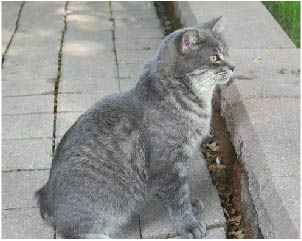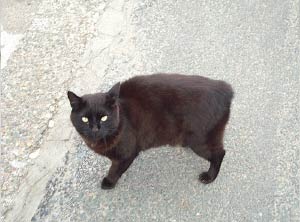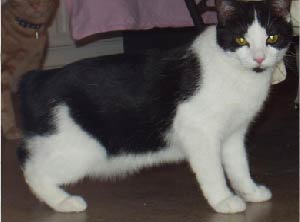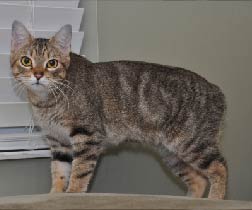F
our new, consistent varieties have been developed from the Manx (the original version of which is now sometimes consequently called the Shorthair Manx). These are the Cymric (Longhair Manx), the Isle of Man Shorthair and Isle of Man Longhair, and the Tasman Manx, though only the Cymric has garnered widespread acceptance in breed registries as of 2014.Cymric (Manx Longhair: The Cymric or Manx Longhair is a tailless or partially tailed cat of Manx stock, with semi-long to long hair, e.g. as the result of cross-breeding with Himalayan, Persian and other longer-haired breeds early in its development. While its name refers to Wales (Cymru), the breed was actually developed in Canada, which has honoured the breed with a commemorative 50-cent coin in 1999.
Simply covering it in their Manx breed standards, the US-based Cat Fanciers’ Association (CFA),[31] the Co-ordinating Cat Council of Australia (CCCA),[32] and the UK’s Governing Council of the Cat Fancy (GCCF)[33] recognise the variety as a longer-haired Manx rather than “Cymric” (the CFA[31] and CCCA[32] call it the Manx Longhair, while GCCF uses the term Semi-longhair Manx Variant[33]). The majority of cat registries have explicit Cymric standards (published separately or along with Manx). Of the major registries, only the Feline Federation Europe (FFE) does not recognise the breed or sub-breed at all, under any name, as of 2014 (their Manx standard was last update 17 May 2004).
Isle of Man Shorthair (tailed): Resembling the British Shorthair, the Isle of Man Shorthair is essentially a fully tailed Manx cat. That is, it is a cat of Manx stock, with Manx features, but without any expression of the Manx taillessness gene. As of March 2013, it is only recognised by New Zealand Cat Fancy (NZCF) with its own breed standard. Any coat colour and pattern acceptable in the British Shorthair is permissible in the IoM Shorthair (the same restriction is applied to the Manx in the NZCF standard), and it requires the double coat of the Manx.[34] In other international registries (e.g. GCCF, who also treat Manx as a British Shorthair variant[29]), such cats are designated “Tailed Manx” and only recognised as Manx breeding stock (they are important as such, since breeding two tailless Manx together results in birth defects), and cannot be show cats.[33]
Isle of Man Longhair (tailed): Essentially a fully tailed Cymric cat, i.e., a cat of Cymric (and thus Manx) stock, the Isle of Man Longhair has Cymric features, but without expression of the Manx taillessness gene. As of March 2013, it is only recognised as a separate breed by NZCF with a breed standard. Coat colours are limited to those acceptable in the British Shorthair, and requires the doubled and thick, long coat of the Cymric.[35]
Tasman Manx (curly-coated): Named after Tasman Sea between Australia and New Zealand, the Tasman Manx is a tailless or partially tailed Manx cat with a curly-haired coat not unlike that of a Selkirk Rex, due a recessive mutation which arose in Manx litters in both Australia and New Zealand. As of March 2013, the breed is only recognised by the NZCF[36] and the Catz Inc. registry[37]:222–227 (also of New Zealand) with breed standards. The coat may be short or semi-long.
The type arose possibly without existing rex mutation bloodlines (and none of the rex breeds are permitted as out-cross partners with Tasman Manx in Catz breeding guidelines).[37] Depending on length of tail (if any) and coat, kittens may sometimes be



 Here, the tails are still essentially a stub,
but they are not nearly non-existant like within the
previouly captioned picture.
Here, the tails are still essentially a stub,
but they are not nearly non-existant like within the
previouly captioned picture.
 An example of the Shorthair Manx is shown here,
as well as a tail that is virtually non-existant.
An example of the Shorthair Manx is shown here,
as well as a tail that is virtually non-existant.
termed “Tasman Cymric”, “Tasman Isle of Man Shorthair” or “Tasman Isle of Man Longhair”, but these are not considered separate breeds. The term “Tasman Rex” has been applied to cats with this gene that do not fall into one of the previously mentioned labels[38] (lacking the Manx face and body shape to qualify), though relation if any to extant Rex mutation breeds is unclear. All of these additional terms beyond “Tasman Manx” appear to be “recognised”, even promulgated by NZCF[38] but without breed standards, and even the permissive Catz registry does not include them as of July 2014.[37]